Sunjonggwan of the Royal Room / 왕의지밀 순종관
11.9Km 2025-08-13
5218-6, Chunhyang-ro, Wansan-gu, Jeonju-si, Région Jeonbuk
+82-63-284-1004
This hanok (traditional Korean house) hotel is located near Jeonju Hanok Village. The hotel complex stands on a plot of land spanning 19,840 m2, containing 11 residential buildings and other facilities. Modern hanok buildings are built on a line, blending with the surrounding nature to offer a comfortable stay. The name of the hotel is evident in the 11 residential buildings, all named after the kings of the Joseon Dynasty.
Sunjonggwan has six rooms in total. The rooms are divided into Gold and Silver Rooms, and are classified into Grade 2, Grade 3, and Grade 5 rooms, after the grading system used for government officials during the Joseon Period. Gold Rooms are located on the second floor, while the 1st floor is occupied by the Silver Rooms. Each room is furnished with a combination of hanok’s unique charms and modern comfort. Exposed wooden beams fill the room with a gentle scent of wood, while window walls offer an expansive view of the scenery outside.
Restaurants such as Samtaegeuk Restaurant, the site of the hotel’s breakfast offering, and Samjogo Restaurant, a Korean restaurant serving lunch and dinnertime, are designated as COVID-19 Safe Restaurants by the city of Jeonju. The Convention Center, which houses a hanok cafe, also offers a number of different facilities for the guests. It takes only 10 min by car to reach most tourist sites in Jeonju.
Rizerie Saekjang (색장정미소)
12.3Km 2024-04-08
2-15, Wonsaekjang-gil, Wansan-gu, Jeonju-si, Région Jeonbuk
La rizerie Saekjang se situe à environ 5 minutes du village des hanok de Jeonju. L'endroit est désormais un café construit sur les bases d'une rizerie datant des années 1950. Le café sert aussi de lieu d'expositions notamment autour de la photographie.
Rue du makgeolli de Samcheon 2-dong (삼천 2동 막걸리골목)
12.5Km 2025-08-12
Samcheon-dong 1-ga, Wansan-gu, Jeonju-si, Jeollabuk-do
Le quartier du makgeolli de Samcheon-dong s’est développé le long de la rue Geomasan-ro, dans l’arrondissement de Wansan à Jeonju. Sur environ 200 mètres, une rangée d’anciens établissements de makgeolli s’y est installée. Autrefois principal centre de production de makgeolli en Corée, Jeonju comptait de nombreuses tavernes et maisons de makgeolli dans presque chaque ruelle, notamment à Samcheon-dong. À partir des années 1990, alors que le makgeolli regagnait en popularité en tant que boisson traditionnelle nationale, plusieurs établissements se sont regroupés dans cette zone, donnant naissance à ce qui est aujourd’hui connu comme la ruelle du makgeolli de Samcheon-dong.
Ce quartier, l’un des plus anciens de Jeonju en matière de tradition de brassage, est devenu une destination emblématique de la ville et a même été désigné « patrimoine du futur de Jeonju ». On y trouve des dizaines de maisons de makgeolli proposant chacune leur propre style, ce qui permet aux visiteurs de choisir selon leurs goûts. Il suffit souvent d’une simple commande d’un pichet de makgeolli pour se voir servir une table généreusement garnie de plus de 20 types d’accompagnements : poisson grillé, jeon(crêpes coréennes), jjigae(ragoûts), fritures, samhap (porc, raie fermentée et kimchi servis ensemble) et autres mets traditionnels.
Aux heures de pointe, il n’est pas rare de voir des files d’attente devant chaque établissement. Ce lieu animé, réputé pour sa convivialité et ses plats copieux qui suffisent largement à constituer un repas, est parfait pour un moment chaleureux entre amis, en famille ou entre collègues. Si vous préparez un voyage à Jeonju, ne manquez pas ce haut lieu de la culture culinaire locale.
Statue de Bouddha debout de Godori à Iksan (익산 고도리 석조여래입상)
12.5Km 2024-04-07
400-2, Donggodo-ri, Geumma-myeon, Iksan-si, Région Jeonbuk
+82-63-859-5792
La statue de Bouddha debout de Godori à Iksan est le trésor n°46 de Corée. Les deux statues de Bouddha (mesurant toutes deux 424cm) se font face à une distance de 200m l’une de l’autre et montrent l’histoire d’un amour éternel mais unilatéral. Selon la légende, les deux bouddhas (un mâle, une femelle) sont amoureux mais ne peuvent se rencontrer qu’une seule nuit par an, lors du 12ème mois du calendrier lunaire. Après le coucher du soleil en ce jour spécial, la rencontre des amoureux est permise mais ces derniers doivent retourner à leur position initiale avant le chant du coq au petit matin.
Les deux statues sont très représentatives de l’ère Goryeo, qui a produit en son temps de nombreuses statues contenant très peu d’expressions corporelles. Parfaitement fidèle au style de l’époque, chaque Bouddha, qui n’a presque aucune forme, est représenté avec des habits simples et des bras à peine visibles. Sur leur tête, les bouddhas portent une couronne aggrémentée d’un deuxième chapeau de forme carrée. Avec leur visage carré, leur petits yeux, leur nez plat et petites lèvres, les bouddhas sont évocateurs des gardiens de dieu placés aux entrées des villages.
Musée de l’histoire de vie de Jeonju (전주역사박물관)
13.1Km 2024-04-07
259, Ssukgogae-ro, Wansan-gu, Jeonju-si, Région Jeonbuk
+82-63-228-6485
Le Musée de Jeonju a ouvert ses portes en 2002, montrant au public la longue et fascinante Histoire de la Corée. Il est divisé en deux expositions permanentes. La première concerne la Révolution des Fermiers Donghak (Insurrection de 1894 contre le colonialisme japonais). Evènement ayant joué un rôle important quant au dévelopement de la ville de Jeonju. La deuxième exposition est dédicacée à la mémoire des résistants, qui ont rapidement gagné la confiance des civils afin de lutter contre l’invasion japonaise. Il y a aussi un espace réservé à la mémoire du mouvement d’indépendance lorsque la Corée recouvra sa liberté face au Japon. D’autres espaces sont dédiés aux soulèvements ou évènements les plus importants de l’Histoire de la Corée.
Musée national de Jeonju (국립전주박물관)
13.2Km 2024-04-07
249, Ssukgogae-ro, Wansan-gu, Jeonju-si, Région Jeonbuk
+82-63-223-5651
Le musée national de Jeonju est un centre de recherche, de conservation et d’exposition au service des trésors du Jeollabuk-do.
Il conserve 24.000 objets anciens pour la plupart venant des royaumes de Seonsa, Mahan, et Baekje.
Il y a aussi de nombreux objets bouddhiques artisanaux, des poteries, des objets anciens en or et des ustensiles artisanaux.
Parmi cela, 1,100 pièces peuvent-être vu au musée Sangseol.
Lorsque vous entrez au rez –de - chaussée, vous pouvez voir la salle des antiquités composée en 4 parties dont la partie Seonsa.
Au 1er étage la salle des Arts et celle du folklore. Dans la salle des arts sont exposés des oeuvres de la région du Jeollabuk-do.
La salle est divisée entre des sculptures bouddhiques, des oeuvres en métal, des poteries Goryeo, des documents historiques et une galerie de peintures.
La salle du folklore est juste en face de la salle des arts et nous fait décourvrir l’unique style de vie de la région du Jeollabuk-do.
Elle est composée de la section agriculture, habitudes alimentaires, et art folklorique.
Différemment des autres pièces d’exposition, elle rassemble divers matériels de manière à avoir une vue d’ensemble compréhensible de la vie populaire de la région.
Près du musée national de Jeonju se trouve l’université de Jeonju.
Si vous avez un peu de temps, allez donc visiter le campus qui est fort propre et calme; allez à la rencontre des étudiants afin de discuter de leur culture avec eux.
Ssangneung d’Iksan (익산 쌍릉)
13.9Km 2024-04-07
San 55~56, Seogwang-dong, Iksan-si, Région Jeonbuk
+82-63-859-5792
Les Ssangneung (tombes jumelles) d’Iksan sont des sépultures à chambre de pierre qui ont été exhumées à l’occasion de fouilles académiques en 1917. Au moment des fouilles, on a découvert que les tombes avaient déja été illégalement exhumées, probablement à l’époque du roi Chungsukwang de la dynastie Goryeo. Bien que les pillards aient emporté tous les accessoires funéraires, les cercueils de bois ont été retrouvés relativement intacts.
Les cercueils ont été sérieusement endommagés à la suite de la Guerre de Corée, mais ont été restaurés par la suite par le Musée National de Jeonju. Lorsqu’elles ont été découvertes pour la première fois, les tombes jumelles mesuraient 3,1 m de haut pour 0,5 km de large, mais une partie du bois d’origine a été perdu durant l’histoire mouvementée des tombes et la restauration qui s’est ensuivie. La plus grande des tombes restaurées mesure à présent 30 m de diamètre et 5 m de haut, tanfis que la plus petite mesure 24 m de diamètre et 3,5 m de haut. Le 21 janvier 1963, le tombes ont été désignées Site Historique n° 87.
Les tombes jumelles sont distantes d’environ 200 m. La tombe de l’Est s’appelle Daewangmyeo (la grande tombe royale) et celle de l’Ouest s’appelle Sowangmyo (la petite tombe royale). L’intérieur des tombes est fait dans le même style que les tombes à chambre de pierre trouvées dans le complexe funéraire de Neungsan-ri à Buyeo. Si l’on prend en compte le fait que le temple voisin de Mireuksaji a été construit durant le règne du roi Mu de la dynastie Baekje, il est très probable que les tombes jumelles sont celles du roi Mu et de son épouse, la reine Seonhwa.
Parc de Seodong (서동공원)
13.9Km 2024-04-08
41-14, Godo9-gil, Geumma-myeon, Iksan-si, Région Jeonbuk
+82-63-859-3818
Le parc de Seodong (crée en 2004), est un parc de sculpture situé entre les Donggodo-ri et Sinyong-ri à Geumma-myeon dans la ville d’Iksan. Le parc est étendu sur 132 000 mètres carrés et contient approximativement 68 oeuvres réalisées par de célèbres sculpteurs coréens. On trouve galement sur place un observatoire, des aires de repos, des installations pour la pêche, des chemins de randonnée et un hall d’exposition dédié aux objets de l’ère Mahan.
Réservoir de Gyeongcheon
14.9Km 2024-04-07
Hwasan-myeon, Wanju-gun, Région Jeonbuk
063-240-4224
C’est le plus grand réservoir de la région du Honam après celui de Dongrim, et le cinquième du pays. Entouré par une petite chaîne montagneuse, il mesure 1 km de large, et 3 à 4 km de long. Les habitants de Jeonju s’y rendent volontier pour pêcher et se reposer.
La partie du réservoir en amont est divisée en deux, et celle en aval est très accidentée, et accueille un élevage de poissons. On y voit souvent des carpes mesurant jusqu’à 90 cm.
※ Emplacement du réservoir de Gyeongcheon : Gyeongcheon-myron et Hwasan-myeon, Wanju-gun, Jeollabuk-do
Arboretum de Daea (대아수목원)
14.9Km 2024-04-07
94-34, Daeasumok-ro, Dongsang-myeon, Wanju_Gun, Région Jeonbuk
+82-63-280-4590
L’arboretum de Daea se situe sur une colline, sur le mont Unjangsan dans la chaîne montagneuse de Sobaek. Grâce à son emplacement dans une zone à l’intérieur des terres dans la partie Sud-Ouest de la péninsule coréenne, il bénéficie de températures relativement modérées. La zone de l’arboretum de Daea est l’une des huit régions arrières de la Corée dont l’accès est restreint à la plupart des touristes. Ainsi, de nombreuses espèces végétales ont été préservées dans leur état naturel, et protégées de la destruction humaine. La région abrite environ 96 espèces animales, parmi lesquelles des oiseaux comme le coucou ou le bruant élégant, ainsi que des sangliers, des élans et des ratons-laveurs. L’arboretum est organisé selon divers thèmes, comme l’arboretum tropical, la colline boisée monument naturel, le centre d’observation où les visiteurs peuvent comparer les différentes espèces d’arbres, la roseraie et le jardin paysager.
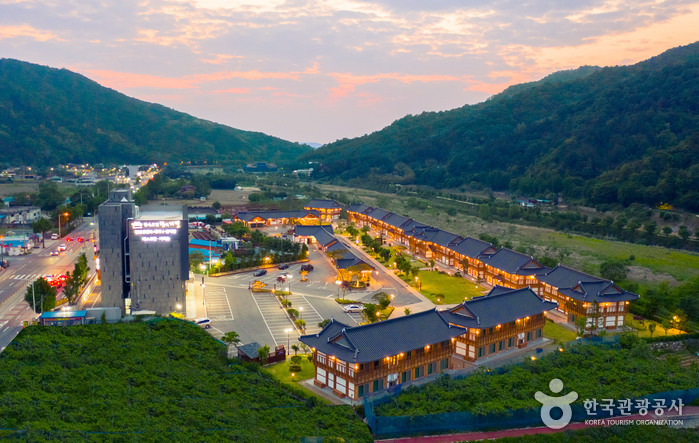

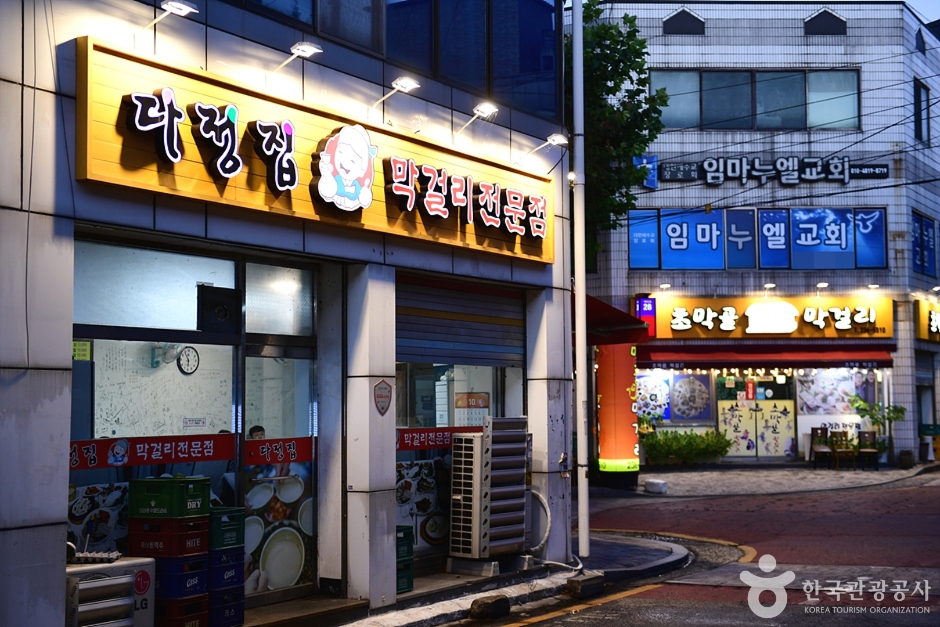
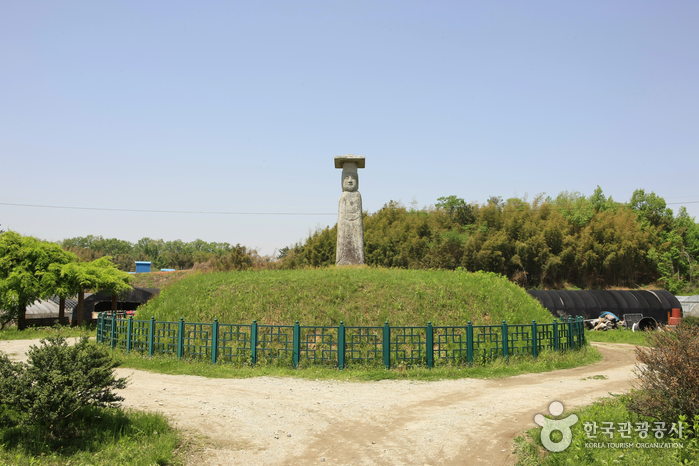
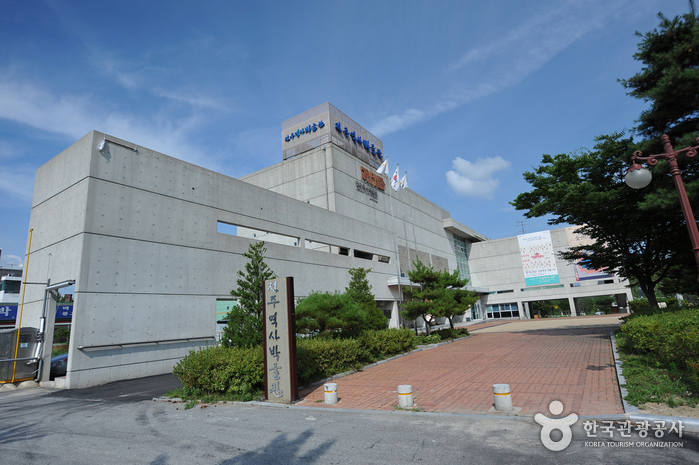
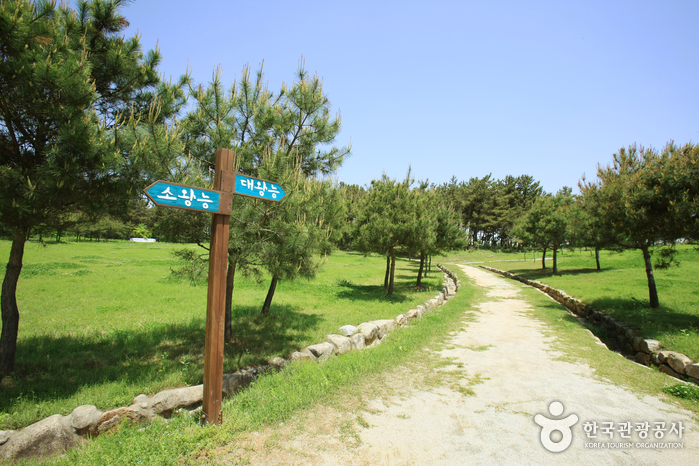
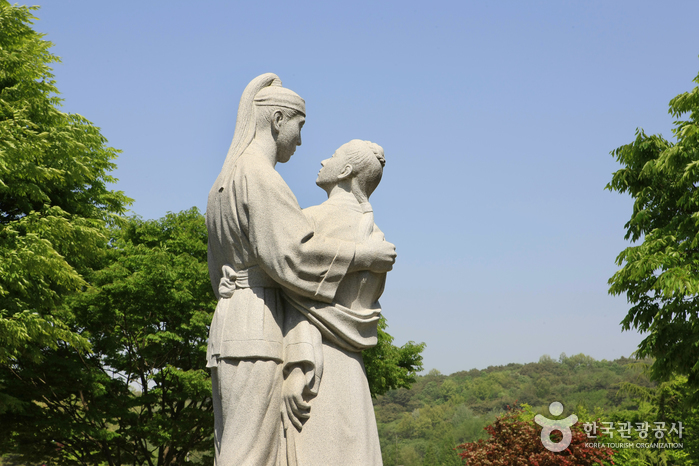
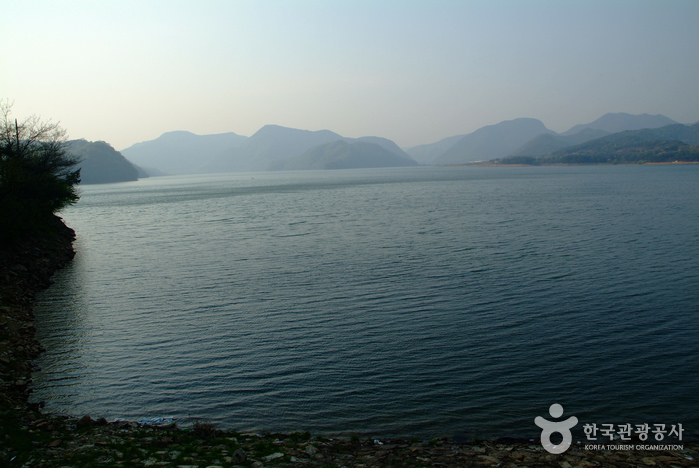
 Français
Français
 한국어
한국어 English
English 日本語
日本語 中文(简体)
中文(简体) Deutsch
Deutsch Español
Español Русский
Русский